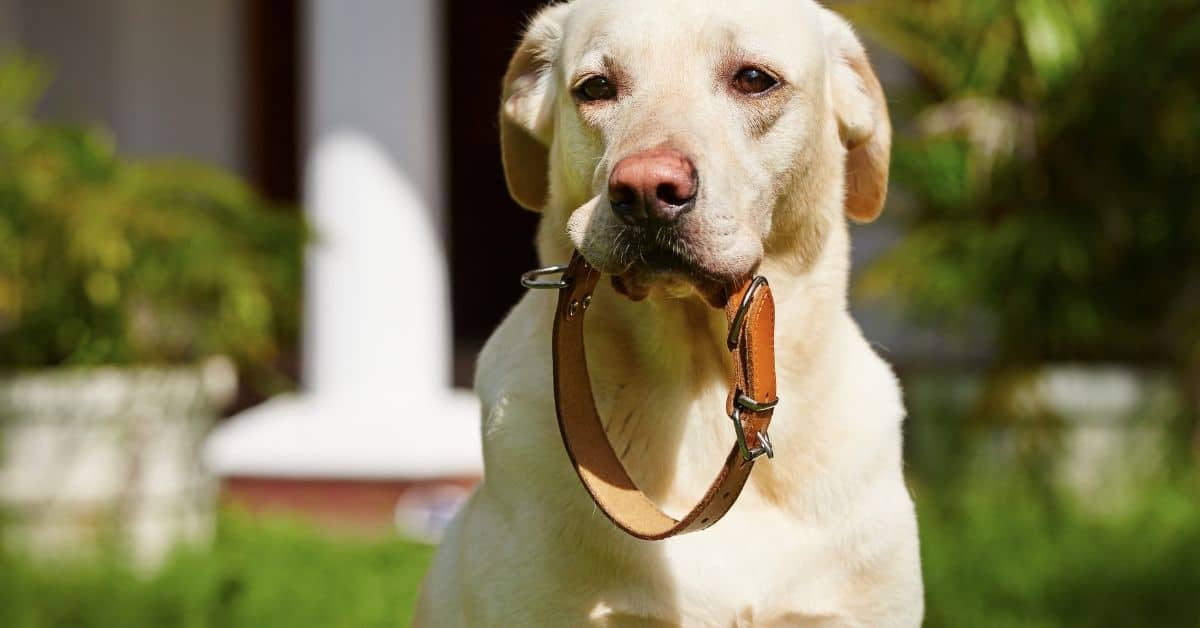A lot of dog owners wonder, “how tight should a dog collar be?”
A dog collar is an essential canine accessory for a variety of reasons.
Dog collars can be used for safety or to enhance your dog’s beauty.
A delicate balance must be struck between a collar that is too tight and one that is too slack.
But, happily, the science of dog collars isn’t too tough to grasp, and we’re happy to assist you to know how tight should a dog collar be.
From the complexities of selecting the ideal collar to determine the proper fit.
Consider this guide to be your one-stop shop for any dog collar questions.
This article will discuss how tight a dog collar should be and how to measure it correctly.
How Tight Should The Collar Be?
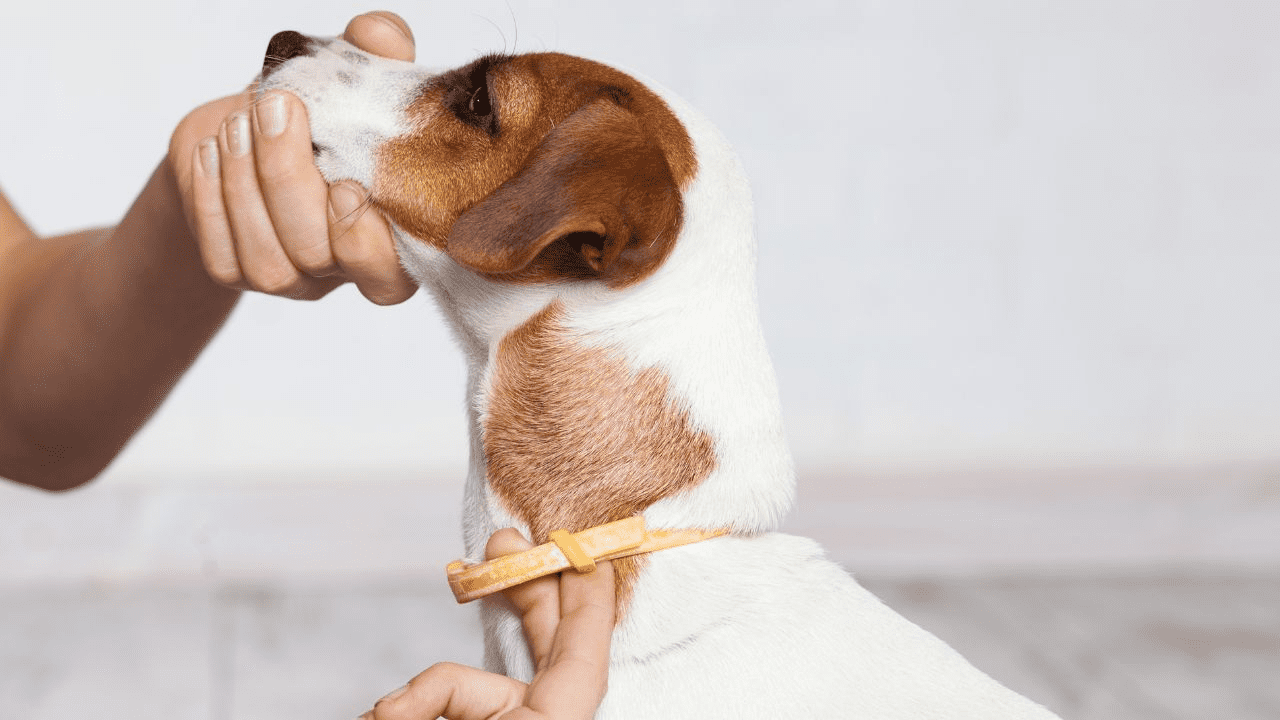
Consider the two-finger rule the gold standard for the ideal dog collar fit.
Purchase the normal dog collar for your pet to wear first.
Simply place it on your dog and attempt to tuck two fingers slide under the collar.
You’re on the right track if your fingers fit comfortably under the collar (near your pet’s neck).
However, the collar is too tight if you struggle to get your fingers under the collar.
Pretty simple, yes?
It’s best if you use your middle fingers for this test.
The collar should fit snugly, not too tightly or too loosely.
Additionally, it’s a good idea to continue assessing the collar’s fit every few months because your dog might still be growing (especially larger dogs).
Unfortunately, some dog collars come with a risk of doing more harm than good to your dog.
Also, avoiding them will be in your best interests and your furry friends.
However, aside from that, adequately used dog collars can go a long way in protecting your dog from harm.
As an illustration, collars are crucial when you’re out in public to prevent your pet from running off into the distance.
You shouldn’t be reluctant to collar your pet because of this.
However, remember the two-finger rule when determining how tight a collar should be on a dog.
How To Measure Your Dog’s Existing Collar
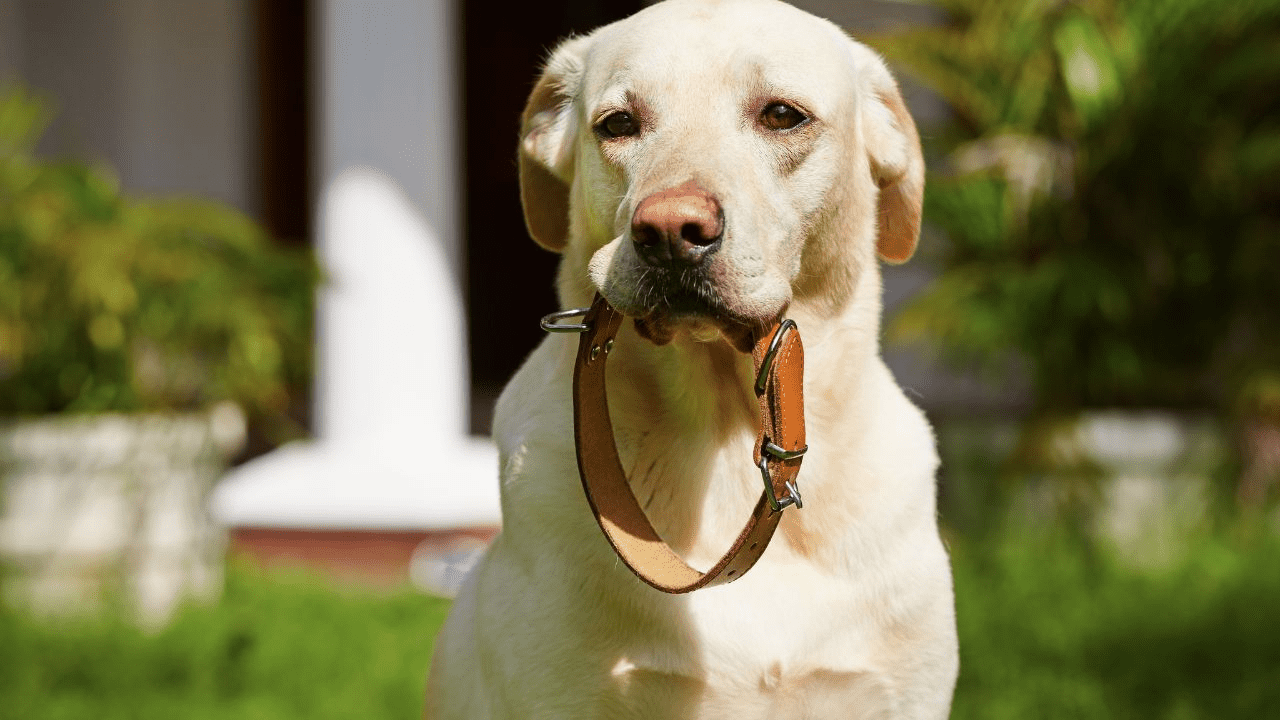
If you’re like most dog owners, your pet probably wears a collar most of the time.
And if you have a growing pup, you’ll likely need to buy a new collar as they grow.
But how do you know what size to get?
Measuring your dog for a collar can seem tricky, but it’s not too difficult.
Just follow these simple steps, and you’ll have the perfect fit in no time!
Get A Tape Measure
Before you can measure your dog for a collar, you’ll need to grab a measuring tape.
You can find one at any hardware store or even online.
If you don’t have one handy, just use a piece of string and then measure the length of the line with a ruler.
Tape Measure Your Dog’s Lower Neck
Next, measure just below your dog’s neck where its collar usually sits.
Be sure to keep the measuring tape snug against their skin – this is important later when we compare our measurement to the manufacturer’s sizing chart.
Reference The Manufacturer’s Sizing Chart
Now that you have your dog’s neck measurement, it’s time to find out what size collar is best for them.
Most manufacturers provide a sizing chart with their collars, and you can easily match your dog’s measurements to the right one.
But how tight should a dog collar be?
Generally speaking, you want the collar to fit snugly enough so that it won’t slip off but loose enough so that it doesn’t cause discomfort or chafing.
With these three steps, measuring your dog for a collar will be an easy task!
And remember, always check the manufacturer’s sizing chart to ensure you get the perfect fit for your pup!
Why Is A Correctly Fitting Collar Important?
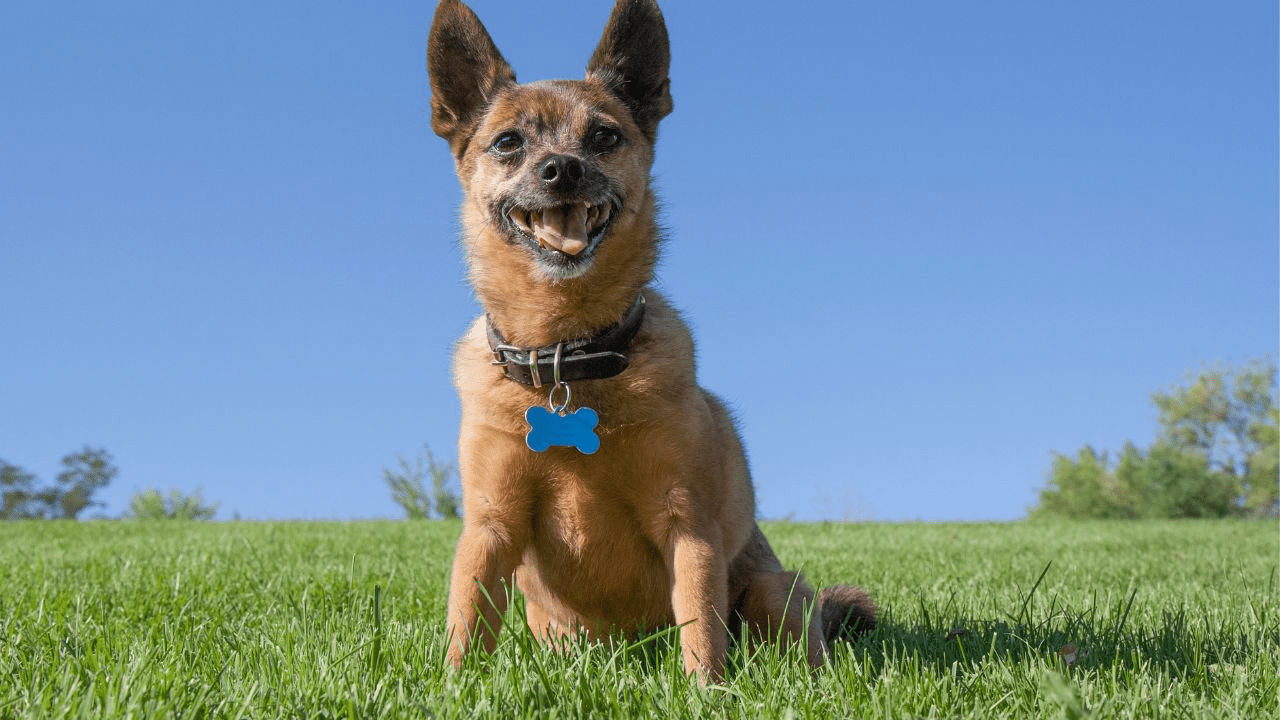
A correctly fitting dog collar is significant because it prevents the dog from escaping and makes it more visible, which can help keep the dog safe.
Additionally, a properly fitted collar will be more comfortable for the dog and help protect the dog’s neck.
A correctly fitting collar should be snug enough so that two fingers can fit between the dog’s neck and the collar.
It’s essential to ensure that the collar is not too tight, as this can cause chafing and irritation.
If it is any tighter or looser than that, then it is likely that it needs to be adjusted.
It’s also essential to check how secure the fastening mechanism is on the collar, such as buckles or clips, to ensure they cannot undone easily.
With a correctly fitted dog collar, you can have peace of mind knowing that your pup is safe and comfortable.
Signs Of An Overly Tight Dog Collar
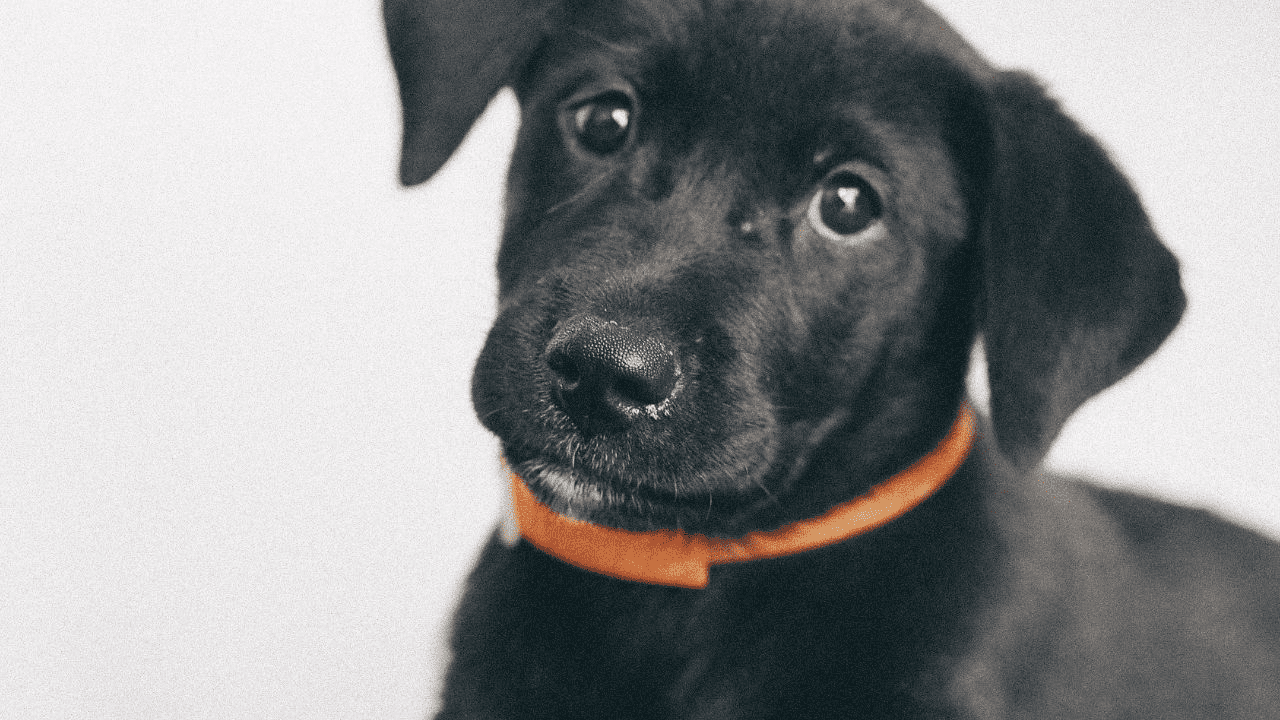
A dog’s collar is too tight can cause several problems.
The most obvious sign is that the dog will cough.
That is because the collar restricts the dog’s breathing.
The dog may also become lethargic and short of breath.
Finally, the dog may lose fur around its neck where the collar constricts it, because of the skin irritation.
If you notice these signs, loosen the dog collar immediately.
Signs That Your Dog’s Collar Is Too Loose
You may notice a few signs if your dog’s collar is too loose.
Firstly, your dog may be able to slip out of its collar very easily.
Secondly, if the collar is too loose, it won’t provide as much support or restraint as a properly fitted collar.
That could lead to your dog being able to pull away from you or escape from its collar altogether.
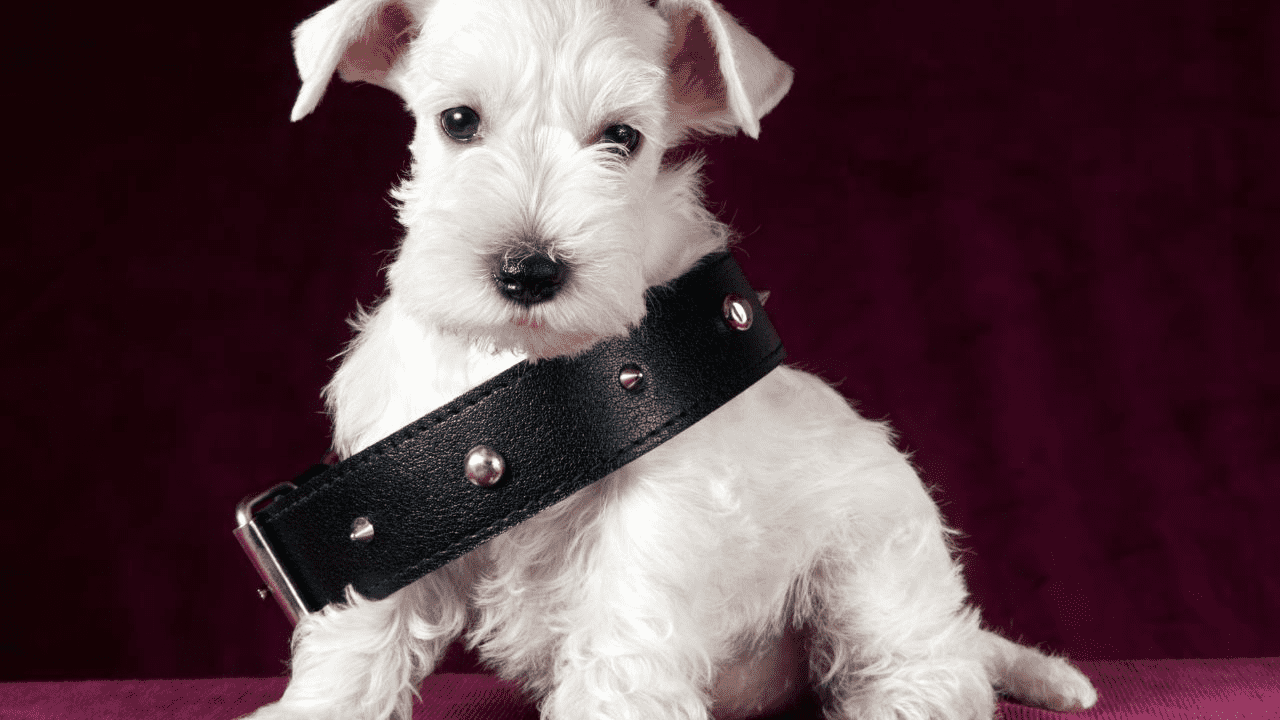
Finally, a loose collar can also be dangerous if caught on something like a fence or bush.
That can cause your dog to choke or even strangle. If you think your dog’s collar is too loose, it’s best to bring it in for a proper fitting.
It’s recommended that a dog collar should fit snugly, but not too tight, around the neck.
Different Types Of Dog Collars
Dogs come in all shapes and sizes, and so do dog collars.
Various types of dog collars are available on the market, each with unique benefits and purposes.
Fabric Dog Collars
A fabric pet collar is made from various materials, including nylon, cotton, and polyester.
They are generally lightweight and comfortable for dogs to wear.
Fabric dog collars also come in a wide range of colors and designs, making them a popular choice for fashion-conscious pet owners.
One downside to fabric dog collars is that they may not be as durable as other types of collars and may not be effective at preventing dogs from slipping out of their collars.
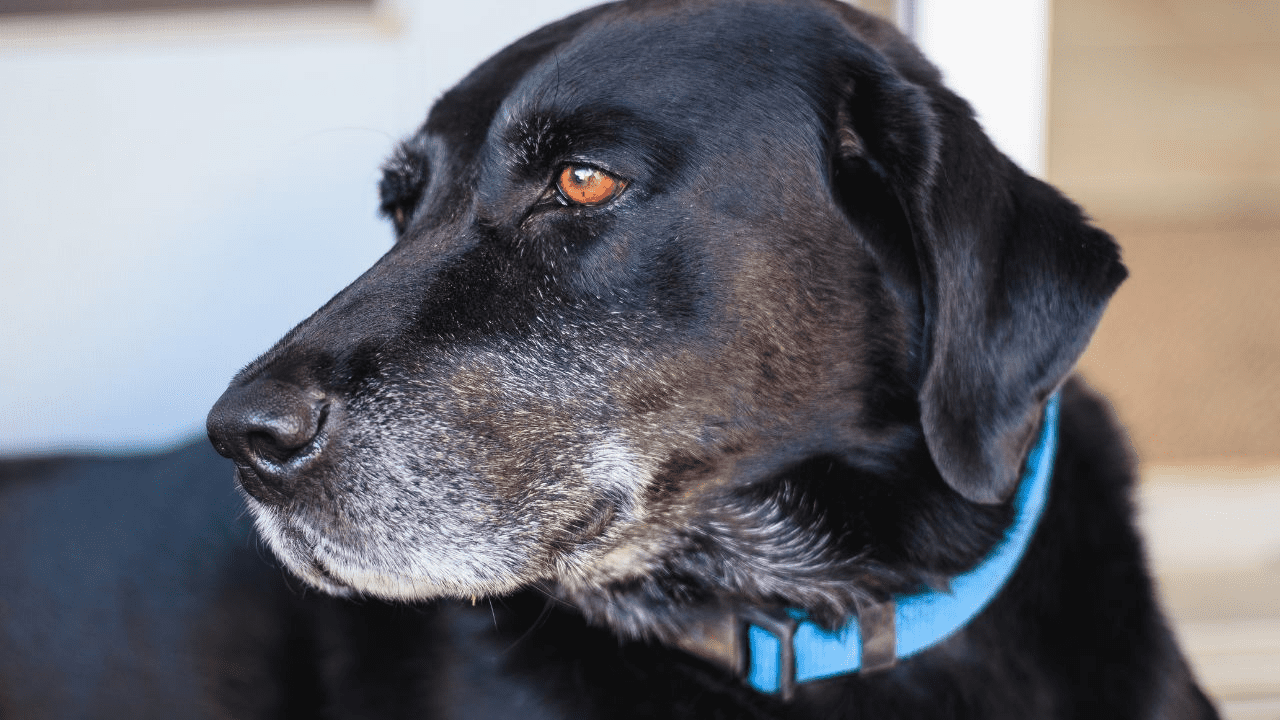
Metal Dog Collars
Metal dog collars are made from sturdy materials such as stainless steel or brass and are designed to last longer than other types of dog collars.
They are often used for training dogs because they provide a firm grip that prevents dogs from slipping out of their collars.
Metal dog collars can also be personalized with nameplates or tags that identify your pet’s name and your contact information.
However, metal dog collars can be heavy for some dogs and should not be used on small puppies or toy breeds.
Leather Dog Collars
Leather dog collars are a classic choice for pet owners who want a durable and stylish collar for their pup.
Leather is strong and highly resistant to wear and tear, making it an excellent choice if you keep the same collar for a long time.
However, leather dog collars require frequent cleaning and conditioning to maintain their quality, so they may not be ideal if you do not have the time to care for them properly.
Flea And Tick Collar
Flea and tick collars are designed to repel fleas and ticks and provide your dog with some degree of protection.
These collars often contain insecticides that are released in small amounts over weeks or months, allowing them to remain effective for extended periods.
However, flea and tick collars may not be suitable for all dogs; they should always be used cautiously and only after consulting a veterinarian.
Related: How To Keep Ticks Off Dogs
Lighted Collars
Lighted collars are designed to make it easier to keep track of your dog during nighttime walks or activities.
These collars feature LED lights or reflective strips that help illuminate the area around your pup, making it easier for you to spot him at night.
Lighted collars can also help others identify your pet if he gets lost.
Electronic Dog Collar
Electronic dog collars are a type of training collar that can be used to help train your dog.
These collars typically come with remote controls that allow the user to send out noises, vibrations, or electric shocks to correct behavior.
While electronic dog collars may be effective at correcting certain behaviors, they should always be used under the supervision of an experienced professional and never as a substitute for positive reinforcement techniques.
Anti-Barking Collar
Anti-barking collars are designed to discourage excessive barking by delivering gentle corrections when your pup barks too much.
These collars may utilize sound, vibration, or mild electric shocks to deter barking; how tight should a dog collar be varies depending on the specific collar.
Anti-barking collars are generally considered safe and humane, but it is vital to research how fast should a dog collar be before purchasing one for your pet.
GPS Collar
GPS collars use Global Positioning System technology to help you locate your dog if he gets lost or goes missing.
These collars come with a tracking device that allows you to monitor your pup’s location in real time so you can easily find him if he gets into trouble.
GPS collars may also have activity tracking and geofencing features, which allow users to customize how their pup is monitored and alerted when she leaves designated areas.
Luminous Collar, LED – Collar, Reflective Collar
Luminous, LED and reflective collars are designed to help make your dog more visible at night.
These collars typically feature bright colors or built-in lights that help to illuminate the area around your pup so he remains visible even in low-light conditions.
Reflective collars are also available, which use reflective materials or technology to ensure cars can see your dog from a distance.
No matter which type of collar you decide is best for your dog, it is crucial to consider how tight a dog collar should be when fitting your pet’s new accessory.
Generally speaking, dog collars should fit snugly but not tightly; if it is too loose, they could easily get caught on something and cause your pup to become trapped or injured.
If you are unsure how tight the dog collar should be, it is always best to consult a veterinarian or professional trainer for advice.
That will ensure that your pup remains safe and comfortable wearing his collar.
Should Dogs Sleep With Their Collars On?
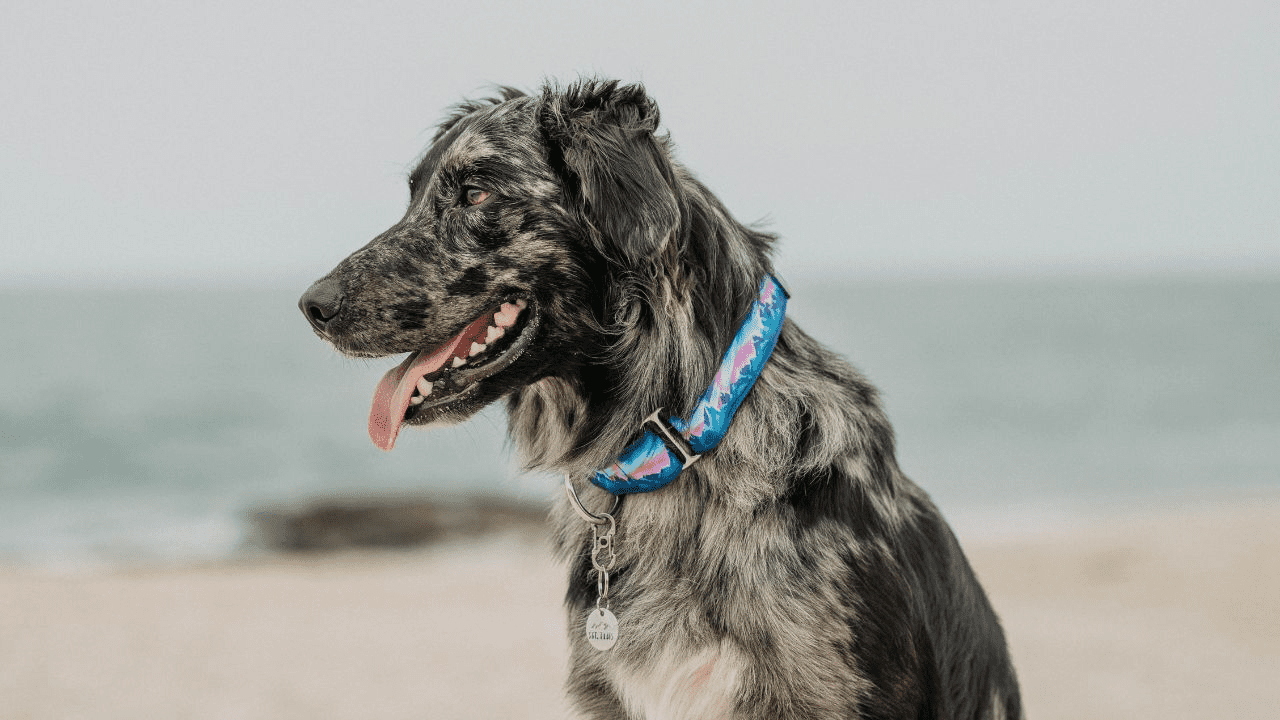
No, dogs should not sleep with their collar on. Leaving the collar on your dog at night may make them uncomfortable and cause breathing difficulties.
Additionally, collars made from metal or plastic can aggravate a dog’s skin when lying down.
Dog collars should also be removed if your pup is going to be in an area with other dogs, as this could reduce their risk of being caught in another pet’s collar during playtime.
Also, consider how much wear and tear the collar will get when your pup sleeps—removing it while resting might prolong its life and ensure your dog is comfortable throughout the night.
Taking off a dog’s collar at night is an easy way to keep them safe and comfortable while they sleep.
It is best to consult your veterinarian if you have any concerns or questions about caring for your dog’s collar.
They can provide more information on how tight the coupling should be and how often it should be replaced.
Taking off your dog’s collar at night is essential in ensuring their safety and well-being.
Doing so will give them a chance to rest in comfort, free from the potential risks posed by wearing a collar all night long.
It’s also important to consider how loose or snug your pup’s collar should be—consulting with your vet can help you determine this for optimal comfort and safety.
Before You Go…
Now you know how the answer to the question, “How tight should a dog collar be?”.
If you want to learn more, read the following articles too!

